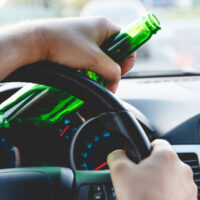Seriously-Impaired Motorist Kills Pedestrian

The suspected driver in a fatal Tampa crash had a BAC level more than three times the legal limit. He also admitted to taking drugs shortly before the wreck.
31-year-old Douglas Ehas was driving a Pinch-a-Penny pool supply truck when he swerved off Bayshore Boulevard near the Julia Street intersection and struck a local 70-year-old man, who was out for his morning walk. The force of the collision threw the unsuspecting man over the protective seawall and into Hillsborough Bay. Good Samaritans tried to rescue the victim, but he was declared dead at the scene.
During a pretrial hearing, Ehas’ attorney questioned the state’s evidence, specifically the lack of a witness who placed Ehas behind the wheel. Additionally, Assistant Public Defender Rocky Brancato pointed out that his client had no prior DUI convictions. Nevertheless, Circuit Judge Catherine Catlin ordered Ehas held without bond pending trial.
First Party Liability
The negligence per se shortcut usually applies in DUI collision cases. In Florida, tortfeasors (negligent drivers) are liable for damages as a matter of law if:
- They violate a penal safety law, such as DUI or reckless driving, and
- That violation substantially caused injury.
This doctrine usually applies whether or not the tortfeasor was convicted of the underlying offense. This wrinkle often comes up in DUI collision cases, because these cases are often hard to prove in court.
To establish guilt beyond a reasonable doubt, which is the standard in criminal court, prosecutors normally must produce a witness who saw the tortfeasor driving at or near the time of the crash.
But in civil court, the burden of proof is only a preponderance of the evidence (more likely than not). So, a Tampa personal injury attorney usually only needs to prove the driver was there at the time of the crash. It’s more likely than not that the person was driving at the time.
This lower burden of proof often plays a role in ordinary negligence claims as well. Hit-and-run claims are a good example. If the victim/plaintiff identifies the vehicle, the owner is usually responsible for damages. It’s more likely than not that a vehicle’s owner was behind the wheel at a particular time, especially if the owner does not have an ironclad alibi.
Damages in a car crash claim usually include compensation for economic losses, such as medical bills, and noneconomic losses, such as pain and suffering. Additional punitive damages might be available as well, in some extreme cases. The impairment facts in the above case probably qualify as extreme.
Speed and Pedestrian Accidents
Whether the tortfeasor was drunk, sober, or somewhere in between, speed is usually fatal in pedestrian accidents.
If the tortfeasor was travelling slower than 20mph, the pedestrian death rate is less than 10 percent. That death rate skyrockets to over 90 percent at impact speeds greater than 40mph.
Excessive velocity not only increases the force in a collision. It also increases the risk of a collision. Speeding drivers are less able to react to changing conditions, like a man walking across the street or a curve in the road.
Third Party Liability
When a commercial driver causes a car crash, the respondeat superior (let the master answer) rule normally applies. Employers, like Pinch-a-Penny, are financially responsible for the negligent acts their employees commit during the scope of employment.
It clearly appears that Ehas was an employee. It does not matter if Ehas was a W-2 worker, an independent contractor, or even an unpaid volunteer. In all these situations, the employer controlled Ehas, in areas like hours worked and routes traveled.
As for the scope of employment, driving drunk and killing a pedestrian is not part of anyone’s job description. However, the wreck probably still occurred within the scope of employment. Ehas was probably on his way to or from a job. And, the employer benefited from the free advertising of a company truck, at least until it became a mangled piece of wreckage on the side of the road.
Third-party liability theories, such as respondeat superior, negligent hiring, and negligent entrustment, are especially important in wrongful death and other catastrophic injury claims. Frequently, individual tortfeasors do not have enough insurance coverage to provide fair compensation in these cases.
Contact Assertive Lawyers
Alcohol-related collisions are often legally complex. For a free consultation with an experienced Tampa car accident lawyer, contact The Matassini Law Firm, P.A. We do not charge upfront legal fees in negligence cases.
